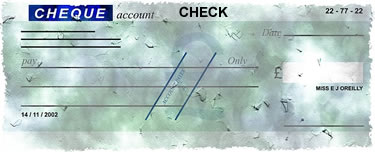An eCheck is simply an electronic reproduction of a paper check. You are old enough to remember them, right? Here’s a refresher:

An eCheck is like a paper check – but no paper. In the world of “lending to the masses,” – think payday loans, car title loans, personal small-dollar loans… – an eCheck is the borrower’s promise of payment, authorizing a lender to debit funds from the borrower’s bank account, either on a one-time or recurring basis. ECheck transactions are conducted electronically! Loan payments are debited and transactions are settled faster than with paper checks.
How Do eChecks Work?
Small dollar lenders having an Automated Clearing House (ACH) merchant account can debit money from their borrower’s bank account directly, avoiding network fees associated with debit and credit card networks.
ECheck transactions are routed through the ACH network that provides the infrastructure for electronic transactions in the U.S. EChecks are the lower-cost option versus debit and credit card networks [rails]. eChecks are:
- Less expensive than other forms of payment
- Easy
- Convenient
- Fast
- Secure.
Regularly scheduled payments – rent, mortgage payments, iTunes, Spotify, membership fees, payday loans… can be paid with an eCheck.
ECheck’s make it much less of a hassle for lenders and their borrowers to initiate new transactions for recurring loan payments.
To implement eCheck transactions, small-dollar lenders simply request authorization for payment from the borrower and initiate a transaction on the ACH rail network. The loan payment is debited from the borrower’s bank account and credited to the lender’s bank account.
Lenders partner with 3rd party payment providers to enable integration. Accomplishing this, it’s a no-brainer to employ eChecks to collect your loan payments. An API via your loan management software is a common solution.
To learn more about eChecks, how to reduce your ACH chargebacks, add an additional payment method for your borrower’s convenience, get the dope here:
